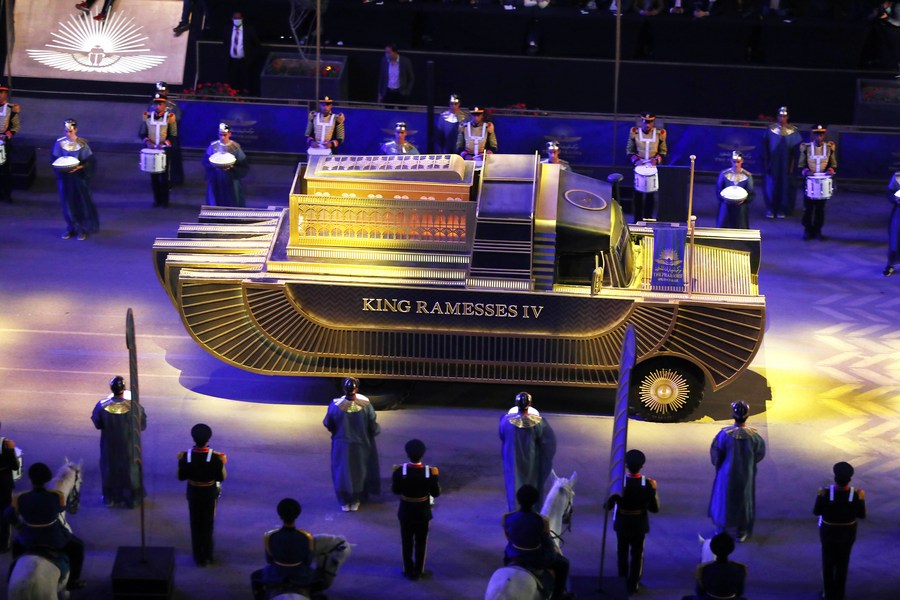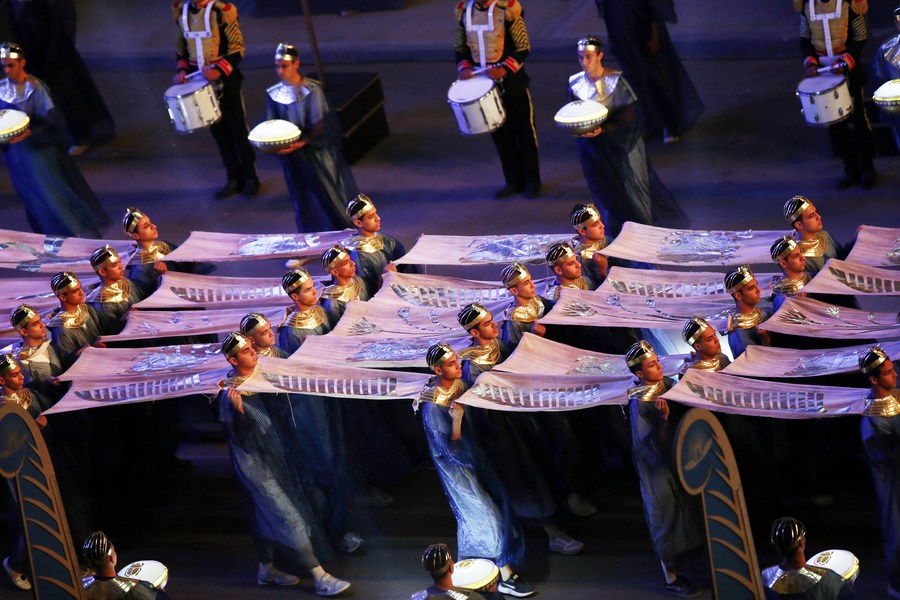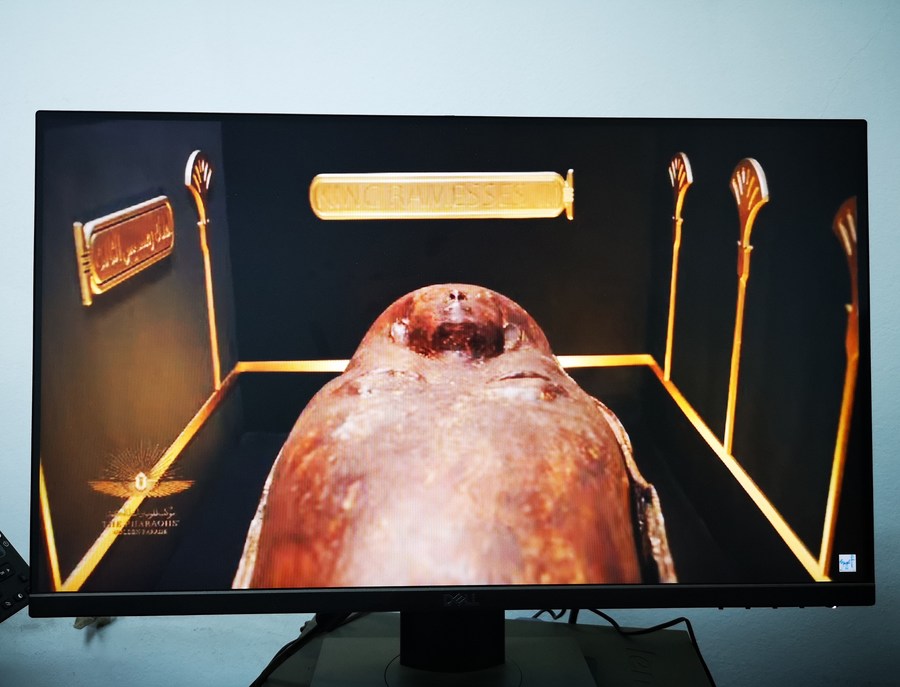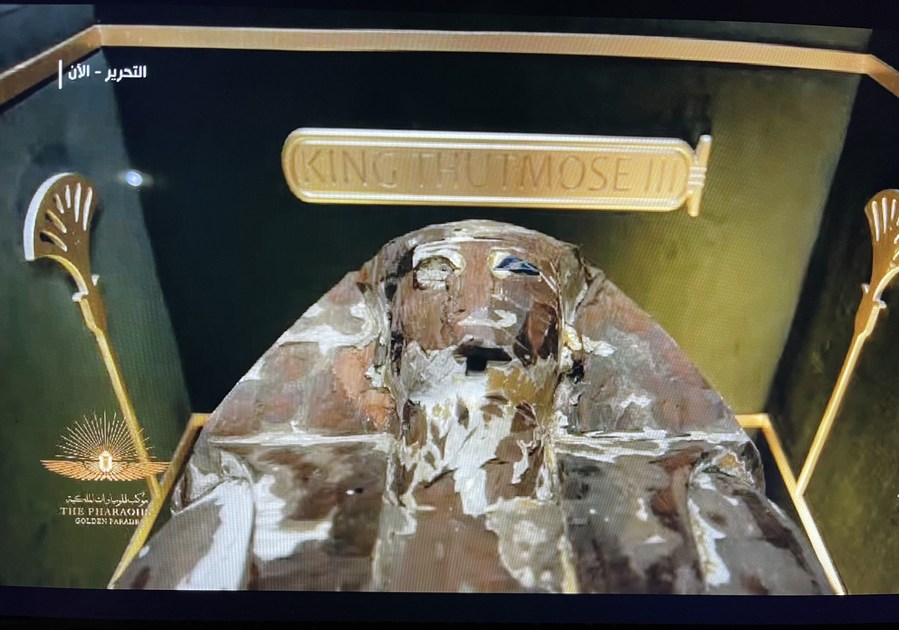
A customized vehicle for transferring the Egyptian royal pharaonic mummy is seen during "The Pharaohs' Golden Parade" festival held in Cairo, Egypt, April 3, 2021. (Xinhua/Ahmed Gomaa)
CAIRO, April 3 (Xinhua) -- Egypt moved on Saturday evening 22 Pharaonic mummies from the Egyptian Museum on Tahrir Square in downtown Cairo to the National Museum of Egyptian Civilization (NMEC) in a festive, remarkable parade known as "The Pharaoh's Golden Parade."
The festivity started with 22 ancient-like vehicles especially designed for the event, each carrying the name of the mummy of the king or queen inside, moving from Tahrir Square and escorted by parades of chariots, motorcycles and men and women dressed in ancient Egyptian outfits.
The royal mummies belong to 18 kings and four queens from the 17th, 18th, 19th and 20th dynasties that ruled ancient Egypt over 3,000 years ago.
They include mummies of famous ancient Egyptian King Ramses II and Queen Hatshepsut.

People in ancient Egyptian outfits perform during "The Pharaohs' Golden Parade" festival held in Cairo, Egypt, April 3, 2021.
About an hour before the parade set off, Egyptian President Abdel-Fattah al-Sisi inaugurated the main hall and the mummies hall in the NMEC, accompanied by Egyptian Minister of Tourism and Antiquities Khaled al-Anani, UNESCO Director-General Audrey Azoulay and Secretary-General of the World Tourism Organization (UNWTO) Zurab Pololikashvili.
"It's the only one of its kind in Egypt and the Middle East," the minister told Sisi while taking him in a tour inside the museum.
The minister explained that the main hall of the NMEC contains 1,500 artifacts and it will be open for visitors the next day, while the mummies hall will be opened on April 18 to coincide with the International Day for Monuments and Sites, also known as World Heritage Day.

A mobilephone photo taken on April 3, 2021 shows a video screen showing a coffin for the Egyptian royal mummy moved during "The Pharaohs' Golden Parade" festival held in Cairo, Egypt. (Xinhua/Sui Xiankai)
"It is a unique cultural, awareness, tourism event. It's unprecedented and it shows that Egypt puts our civilization and antiquities on the top of our priorities," Anani said in a statement before a ceremony started at the NMEC.
With joint efforts of the UNESCO and the Egyptian government, the NMEC's foundation stone was laid in 2002 and its temporary exhibition hall was opened in 2017.
The 22 royal mummies of the Pharaoh's Golden Parade were discovered in two cachettes, the first of which was unearthed in 1881 and the second in 1898, both in Upper Egypt's monument-rich province of Luxor.

A mobilephone photo taken on April 3, 2021 shows a video screen showing a coffin for the Egyptian royal mummy moved during "The Pharaohs' Golden Parade" festival held in Cairo, Egypt. (Xinhua/Wang Dongzhen)
"The remarkable and magnificent parade shows that Egypt celebrates and honors its ancestors," Khaled Gharib, professor of Egyptology at Cairo University, told Xinhua after the parade.
"It is a new museum with a new technology that presents a new Egypt," the professor said, referring to the newly-opened NMEC. ■




